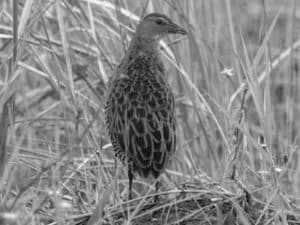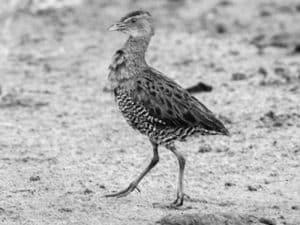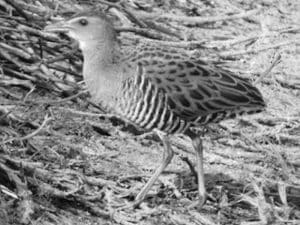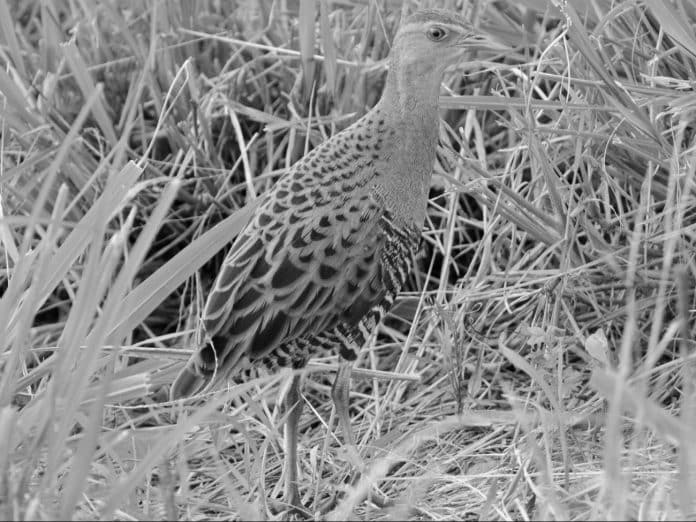Introduction to African Crake
The African Crake (Crex egregia) is a fascinating bird species that can be found in the pristine wilderness of Tanzania. With its distinctive appearance and unique behaviors, the African Crake is a favorite among birdwatchers and nature enthusiasts. In this article, we will delve into the habitat, distribution, behavioral traits, threats, and conservation efforts associated with the African Crake in Tanzania. We will also explore the opportunities for birdwatching and photography, as well as provide tips for observing this magnificent bird in the wild.
Habitat and Distribution of African Crake in Tanzania

The African Crake is primarily found in the wetlands and grasslands of Tanzania. These habitats provide the perfect conditions for the bird’s nesting and foraging activities. The extensive network of rivers, lakes, and marshes in Tanzania offer abundant food sources, such as insects, small fish, and aquatic invertebrates, which form the main diet of the African Crake.
In terms of distribution, the African Crake is widely spread across Tanzania, with sightings reported in various national parks and reserves. Some of the key locations where the African Crake can be spotted include the Serengeti National Park, Selous Game Reserve, and Lake Manyara National Park. These protected areas not only offer a safe haven for the African Crake but also provide nature enthusiasts with the opportunity to witness the bird in its natural habitat.
Behavioral Traits and Characteristics of African Crake
The African Crake is a small to medium-sized bird, measuring around 20 centimeters in length. It has a distinctive appearance, with a dark brown body, white speckled breast, and a short, straight bill. The bird’s plumage serves as an excellent camouflage in its habitat, making it difficult to spot among the dense grasses and reeds.
One of the most fascinating behavioral traits of the African Crake is its secretive nature. The bird prefers to stay hidden in the vegetation, relying on its cryptic coloration to avoid detection. However, during the breeding season, the male African Crake becomes more vocal, emitting a distinctive call to attract a mate. This call, often described as a repetitive “crex-crex,” can be heard echoing through the wetlands of Tanzania.
Threats and Conservation Efforts for African Crake in Tanzania
Like many bird species, the African Crake faces various threats to its survival. The destruction of wetland habitats due to human activities, such as agriculture and urbanization, poses a significant risk to the bird’s population. Additionally, the African Crake is susceptible to predation by larger mammals and birds, as well as the introduction of invasive species.
To address these threats, Tanzania has implemented several conservation efforts aimed at protecting the African Crake and its habitat. The establishment of national parks and reserves has provided a safe haven for the bird, ensuring the preservation of its breeding and foraging grounds. Furthermore, education and awareness programs have been introduced to promote the importance of wetland conservation and the need to protect the African Crake and other avian species.
Birdwatching and Photography Opportunities for African Crake in Tanzania

For birdwatching enthusiasts and photographers, Tanzania offers unparalleled opportunities to observe and capture the beauty of the African Crake. The vast and diverse landscapes of the country provide a rich tapestry of habitats where the bird can be found. Whether it’s the expansive grasslands of the Serengeti or the tranquil wetlands of Lake Manyara, there is no shortage of breathtaking locations to spot this elusive bird.
To maximize your chances of seeing the African Crake, it is advisable to hire a knowledgeable birdwatching guide who is familiar with the bird’s behavior and preferred habitats. These guides can take you to the best locations and provide valuable insights into the bird’s ecology. Additionally, it is essential to practice ethical birdwatching and photography, respecting the bird’s natural behavior and maintaining a safe distance to avoid causing any distress.
Best Time and Locations to Spot African Crake in Tanzania
The best time to spot the African Crake in Tanzania is during the wet season, which typically occurs from November to April. The rains during this period create ideal conditions for the bird, as the wetlands become lush and teeming with life. The increased availability of food attracts the African Crake, making it more active and visible.
As for specific locations, the Serengeti National Park is a prime spot to observe the African Crake. The expansive grasslands and marshes provide ample opportunities to catch a glimpse of this elusive bird. Other notable locations include Lake Manyara National Park, where the bird can be seen skulking along the reed beds, and the Selous Game Reserve, known for its diverse birdlife and pristine wilderness.
Tips for Observing African Crake in the Wild

Observing the African Crake in the wild can be a rewarding experience, but it requires patience, keen observation skills, and respect for the bird’s natural habitat. Here are some tips to enhance your chances of spotting this elusive bird:
- Be quiet and move slowly: The African Crake is highly sensitive to noise and sudden movements. To avoid startling the bird, maintain a calm and quiet demeanor while observing it in the wild.
- Use binoculars or a telephoto lens: The African Crake’s cryptic coloration makes it difficult to spot with the naked eye. Investing in a good pair of binoculars or a telephoto lens will enable you to observe the bird from a safe distance without disturbing its natural behavior.
- Learn the bird’s calls and behavior: Familiarize yourself with the African Crake’s distinctive call and behavioral patterns. This knowledge will help you locate the bird and anticipate its movements, increasing your chances of a successful sighting.
- Respect the bird’s space: When observing the African Crake, maintain a safe distance and avoid disturbing its habitat. Remember that the bird’s well-being and conservation should always take precedence over capturing the perfect photograph.
Other Bird Species Found in the Same Habitat as African Crake in Tanzania
The wetlands and grasslands of Tanzania are home to a wide array of bird species, each with its unique characteristics and behaviors. Some of the other bird species found in the same habitat as the African Crake include:
- Grey Crowned Crane (Balearica regulorum): Known for its striking appearance and elaborate courtship dance, the Grey Crowned Crane is a common sight in the wetlands of Tanzania.
- Saddle-billed Stork (Ephippiorhynchus senegalensis): With its distinctive black and white plumage and vibrant bill, the Saddle-billed Stork is a magnificent bird that can often be spotted near rivers and lakes.
- African Fish Eagle (Haliaeetus vocifer): This iconic bird of prey is renowned for its impressive hunting skills and distinctive call. It is frequently seen perched on branches overlooking bodies of water.
Recommended Birdwatching Tours and Guides in Tanzania
For those planning a birdwatching trip to Tanzania, it is highly recommended to engage the services of experienced birdwatching guides and tour operators. These professionals have an in-depth knowledge of the local birdlife and can tailor a tour to your specific interests and preferences. Some reputable birdwatching tour companies in Tanzania include:
- Tanzania Birding Tours: This specialized tour operator offers customized birdwatching itineraries led by knowledgeable guides who are passionate about avian conservation.
- Nature Expeditions Tanzania: With a focus on sustainable tourism and wildlife conservation, Nature Expeditions Tanzania offers birdwatching tours that showcase the rich avian diversity of the country.
Conclusion: Appreciating the Beauty of African Crake in Tanzania’s Pristine Wilderness
The African Crake is a captivating bird species that adds to the rich avian diversity of Tanzania. With its secretive nature and distinctive appearance, observing this bird in its natural habitat is a truly remarkable experience. However, it is crucial to remember that the African Crake, like other wildlife, requires protection and conservation efforts to ensure its survival for future generations. By appreciating the beauty of the African Crake and supporting initiatives aimed at preserving its habitat, we can contribute to the continued existence of this magnificent bird in Tanzania’s pristine wilderness.

































